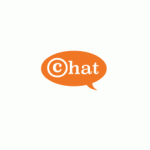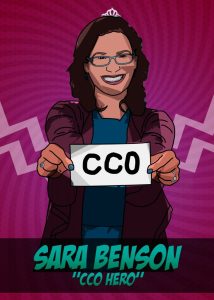
 Reading Aloud: Fair Use Enables Translating Classroom Practices to Online Learning by Meredith Jacob et al is licensed under a Creative Commons Attribution 4.0 International License and is available at https://tinyurl.com/read-aloud-online
Reading Aloud: Fair Use Enables Translating Classroom Practices to Online Learning by Meredith Jacob et al is licensed under a Creative Commons Attribution 4.0 International License and is available at https://tinyurl.com/read-aloud-online
My book chapter from Copyright Conversations, published by ACRL, is available here: Fear and Fair Use: Addressing the Affective Domain
Sara Benson: Hello and welcome to another episode of Copyright Chat. Today, I wanted to take a moment to discuss with you some questions about reading aloud in the era of COVID-19.
Lately, many folks have tried to engage with their students in an online forum. Why have we begun to do this? Usually, librarians in public libraries, school libraries, and even academic libraries will engage with their students in face-to-face classrooms on very frequent basis reading aloud sometimes in groups, sometimes with the librarian directing but usually without any fear of retribution and exercising their rights under the face-to-face teaching exception of copyright. When teaching in a face-to-face environment the copyright exception is rather clear. The Copyright Act provides that anyone may read aloud in the course of face-to-face teaching in a non-profit educational institution or library as long as they are performing or displaying a copy of a lawful work. So, this does not allow them to make a copy of the work but rather to read aloud, to watch an entire movie, to act out a play, to listen to music, all of those sorts of things that we do in the course of face-to-face teaching.
However, in the era of COVID-19, many folks have had to move their classrooms or their library’s classroom settings online and when doing so they’ve become concerned about licensing issues and the realm of possibility of being sued under the guise of Fair Use. Unfortunately, publishers have tried to clear this up but in a way that just made things more confusing. So, many popular publishers reached out on their websites granting libraries a “exception” to copyright allowing them under their purview of owners of the copyright to perform the works with certain guidelines. The guidelines varied from publisher to publisher. Often, they would include that they had to limit the number of users that they were displaying the work to or credit the publisher when they read the work, et cetera, et cetera. I know the publishers were attempting to do something good; to make an otherwise muddy area more clear for their users, their patrons, the librarians, other members of society who wish to read aloud. The problem is that we didn’t really need the publisher’s permission to do this in the first place. When we exercise Fair Use, we do not need to ask for permission to do so.
The problem is that many folks feel very uncertain when exercising Fair Use. They feel that the risk is too great, that they don’t want to be sued, and that they don’t feel comfortable making a good faith Fair Use determination. Unfortunately, the more that we give in to our fear of exercising Fair Use, the more that we allow publishers to overreach. Again, like I said, we didn’t need the publishers to give us permission to read aloud books. Especially, if we were doing so for educational and transformative purposes.
Let me give you a greater example here. Let’s say I am a school librarian and I’ve been forbidden from meeting with my students face-to-face because of the possibility that COVID-19 would be spread in those interactions. I wish to read from a book, a children’s book online and provide that streaming to my students in my classes. When I read aloud, I often pause for emphasis, I often explain the meaning behind certain phrases. I use it as an educational opportunity to get the students to think about the context in which the story takes place and I use it to explain the meanings of different words and maybe even grammar. So, I’m not just reading the book straight through but I’m providing educational opportunities and other questions that the students can think about as they’re listening. In this respect, I am not transplanting the original market for the work but I’m transforming the way that I am presenting the work in a way that brings new meaning or message. The clear and classic transformative Fair Use example.
Now, I know what you’re thinking. You’re thinking that poor librarian could still be sued for exercising what be seems to me, Sara Benson, to be a clear Fair Use. That may be true but I also would like to point out that there is a possibility that she wouldn’t get sued because if she had a good faith belief that her exercise was Fair Use then Section 504C-2 of the Copyright Act provides that she could not be sued for statutory damages in that instance because her belief was a good faith belief and she was acting as a non-profit educational librarian and in that scenario, I don’t think that they publisher would have as great as an incentive to sue because they would get any large damages in that instance.
So, in other words I want to point out that when a read aloud scenario in order to educate to help your students to process information to provide additional context and meaning to the work that you’re reading. You’re not transplanting the market value for the work but rather you’re providing a transformative educational experience for the students and one that the publisher has no right to tell you how to do so. I know, the publishers were trying to do something good by providing some limited exceptions to their copyright but we really should feel a little bit more empowered and use the Fair Use limitation on the rights of the copyright owner to go forward with read alouds in a way that is educational and transformative for our students.
I’m linking here, in this podcast episode, some explanations of this Fair Use exception as it applies to read alouds and this was drafted by some very intelligent, smart copyright librarians and other individuals in the copyright field and I hope that you will find it informative, as well, and I find their examples really helpful too. So, one of the examples that they provide where they state that it would not be a Fair Use is one in which a librarian starts a YouTube channel that is more for entertainment than for education and opens it up to the general public and receives ad revenues for that channel. I think, that is a clear example where the transformative Fair Use doctrine has been pushed a little bit too far and the commercial use is potentially transplanting any revenues that the publisher could make off of their work.
However, they do provide the example that I used earlier where someone is using the work to educate their students and to educate the public or their limited public in the case of a classroom experience about different themes from the book or different vocabulary from the book and in that instance they conclude that it is more likely to be a Fair Use and so, I would encourage people to review the guidelines set forth in the tiny URL linked from this episode and to think through Fair Use with a little more clarity and little less fear and I’m also linking to a chapter that I wrote in the “Copyright Conversations” book below about fear and Fair Use and kind of quell that anxiety that comes when we try to exercise Fair Use. So, I hope you found this informative and I look forward to seeing you on another episode of Copyright Chat.